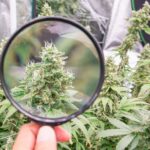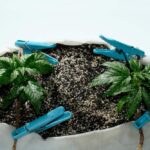The Best Fluffy Pancakes recipe you will fall in love with. Full of tips and tricks to help you make the best pancakes.
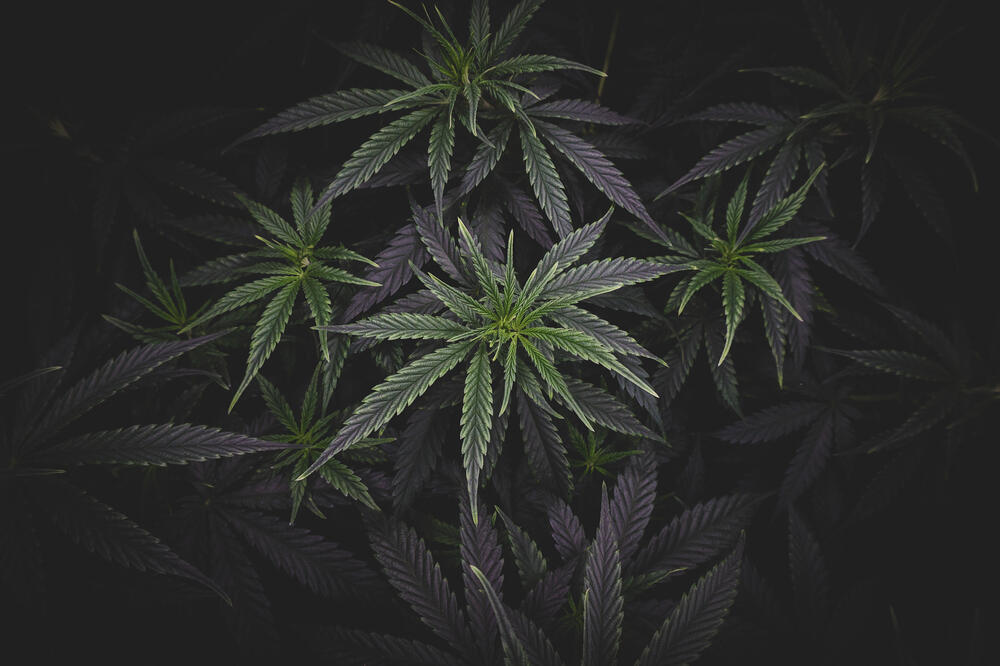
Do Autoflowers Really Need Darkness?
If you’ve started growing autoflowers—or are thinking about it—you’ve probably seen the big debate: Do autoflowers actually need darkness? Some growers run their lights 24 hours a day, others swear by giving plants some shut-eye. As a breeder who’s worked with autoflowers for years, I can tell you this isn’t just a philosophical debate—it directly affects your yields, resin production, terpene profiles, and plant health.
Autoflowers are a unique beast. Unlike photoperiod plants that rely on a strict light-to-dark ratio to trigger flowering, autos do their thing on a timer. But that doesn’t mean light schedules don’t matter. In fact, managing your lighting properly is one of the simplest ways to get more from your grow—especially when you understand how darkness plays a role.
So, let’s break this all down. We’ll go from the biology behind autos to the real-world results I’ve seen using different light schedules, and by the end, you’ll know exactly how to set your light timers for maximum effect.
Understanding Autoflower Biology
What makes autoflowers different from photoperiod strains
The key difference between autoflowers and photoperiod strains is in how they flower. Photoperiod plants need at least 12 hours of uninterrupted darkness to switch from vegetative growth to flowering. Autoflowers, on the other hand, begin flowering based on age—not light exposure.
This all comes down to genetics. Autoflowers are bred from Cannabis ruderalis, a hardy subspecies adapted to the short summers and long daylight hours of northern climates like Russia or Siberia. These plants evolved to finish fast, regardless of changing light.
Because of that, you can run autoflowers on any light cycle you want—24/0, 20/4, 18/6, even 12/12—and they’ll still flower. But just because they can doesn’t mean they should. That’s where darkness (or the lack of it) comes into play.
The role of Cannabis ruderalis genetics in flowering timing
Cannabis ruderalis genetics are what give autos their ability to flower without dark triggers. These genetics work on a biological timer, often kicking into flower at 2 to 4 weeks old. This also means autos have a fixed life cycle. Once they start, they’re on the clock.
Because autos grow and flower on a set schedule, there’s less room for recovery from stress. This makes every environmental factor—light included—even more important. Understanding how light and dark affect those ruderalis-based systems can help you tweak your setup for the better.
The Case for 24-Hour Light Schedules
How continuous light can boost photosynthesis and growth
Running your lights 24/0 (24 hours on, zero off) is popular with indoor auto growers, and I’ve used it myself with solid results. The idea is simple: more light equals more photosynthesis, and more photosynthesis equals more growth.
This is especially effective during the vegging phase, which overlaps with early flowering in autoflowers. When you give your plants constant access to light, they can keep cranking out energy and building biomass without interruption.
Growers who use 24/0 often report:
- Faster vegging
- Bigger plants in smaller pots
- Higher yields per square foot
- Simpler setups (no timer needed)
This method is especially useful if you’re chasing speed and volume.
Downsides: energy costs, heat, hydration, and stress risks
But running lights non-stop comes with trade-offs.
- Higher electricity bills: Running your lights, fans, and ventilation systems 24/7 isn’t exactly cheap.
- Heat buildup: With no dark period to cool down, your grow room can overheat, especially in summer.
- More water demand: Plants under constant light drink more, which means you’ll be watering more often—and possibly stressing your root zone.
- Increased stress: Some strains, especially those with a high sativa lean, can show signs of stress under continuous light—like clawing or stalled growth.
I’ve had certain finicky strains throw a tantrum under 24/0, especially in high heat. So while it works great in the right environment, it’s not always a one-size-fits-all.
Situations where 24/0 works best (e.g., cold climates, rapid turnaround)
There are definitely scenarios where 24/0 shines:
- Cold climates or cold basements: Continuous light can help keep temps stable at night.
- Commercial growers chasing fast turnaround: You might trade a little terpene quality for extra grams per square foot.
- Small, fast indoor grows: If you’re growing 2–3 autos in a tent and want max growth in minimum time, 24/0 might be your best friend.
If your priority is speed, size, and simplicity—and your environment supports it—then 24/0 can be a solid strategy.
Benefits of Including a Dark Period
Plant “rest” – metabolic, hormonal, root and nutrient recovery
Just like humans, cannabis plants have circadian rhythms. And while autoflowers don’t require darkness to flower, that doesn’t mean they don’t benefit from it.
In darkness, cannabis undergoes important recovery processes. The roots shift their energy toward nutrient uptake and expansion. Hormones like auxins distribute more evenly. The plant gets a metabolic break from the constant light-driven photosynthesis grind.
In my experience, giving autos even just 4–6 hours of darkness improves overall plant vigor, especially mid-to-late flower.
Improved resin and terpene profiles with darkness
Here’s where things get tasty.
Resin and terpene production often improves when plants get a dark period. I’ve consistently seen stickier buds and stronger aromas from plants grown on 18/6 or 20/4 schedules, compared to those blasted with 24-hour light.
This may be because certain terpene biosynthesis processes are linked to circadian rhythm and dark-phase gene expression. Basically, your plants do some of their best chemical work while the lights are off.
Avoiding light burn, overheating, and energy waste
Even with LEDs, light intensity and heat buildup can cause problems in smaller tents. Autoflowers are sensitive to light stress, especially in flower.
Including a dark period helps you:
- Prevent light burn on colas near the lamp
- Reduce room temperature during cooler nighttime hours
- Extend the life of your bulbs and gear
- Save money on electricity
If you’ve got a strain that’s showing taco leaves or yellow tips mid-flower, try giving it some darkness—it often helps.
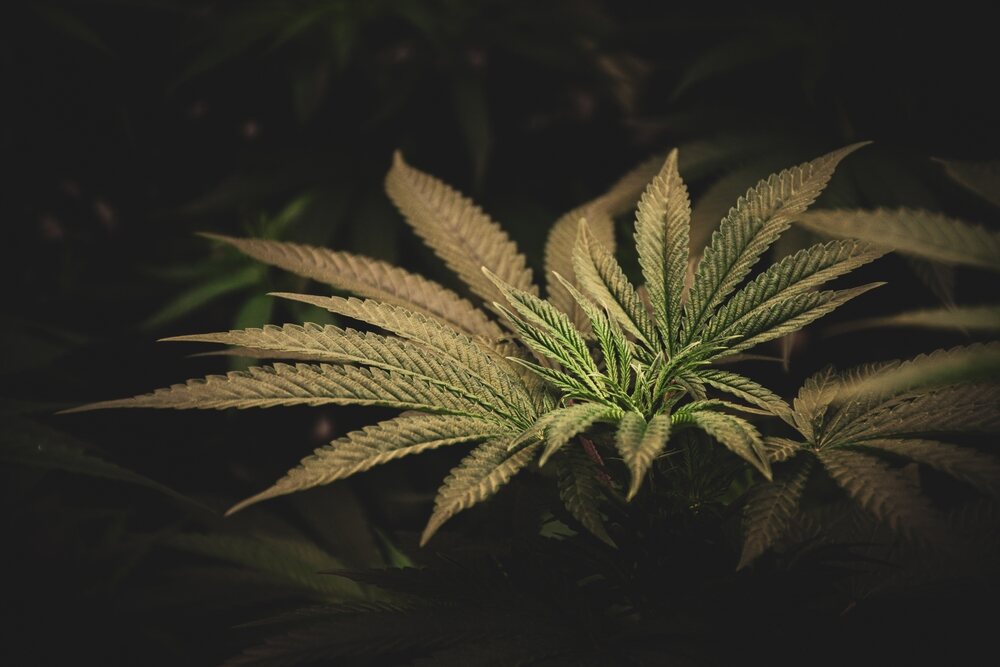
Comparing Common Light Schedules
18/6 – the balanced default: pros and cons
The 18/6 light cycle—18 hours on, 6 hours off—is the most commonly recommended schedule for autos. It gives you lots of light for growth while also allowing your plants to rest and cool down.
Pros:
- Strong growth and yield potential
- Good terpene and resin development
- Lower energy costs than 24/0
- Great balance between growth and recovery
Cons:
- Slightly longer total grow time compared to 24/0
- Slightly smaller yields than maximum light exposure setups
I personally use 18/6 for most of my personal grows—it’s the sweet spot between energy savings and quality.
20/4 – maximizing light, minimal rest
20/4 is your middle ground between full-on 24/0 and the more moderate 18/6.
Pros:
- Pushes faster growth without extreme stress
- Offers some rest and cooling time
- Can improve resin compared to 24/0
Cons:
- Still high on energy use
- Some sensitive strains may still stress without a longer dark period
This is a great schedule if you’ve got the environment dialled in and want to squeeze a little more performance without fully committing to 24-hour light.
12/12 – when it’s used and its impact on yield/size
Running autos on a 12/12 light cycle is unusual, but it can work.
Use it when:
- You’re growing autos alongside photoperiods in flower
- You’re trying to control plant height
- Your electricity cost is high and you want to save power
Downsides:
- Reduced yields due to less light
- Slower growth and smaller size
- Less potential for dense bud development
I only use 12/12 with autos when they’re sharing a tent with photos in flower. Otherwise, it’s not worth the yield loss.
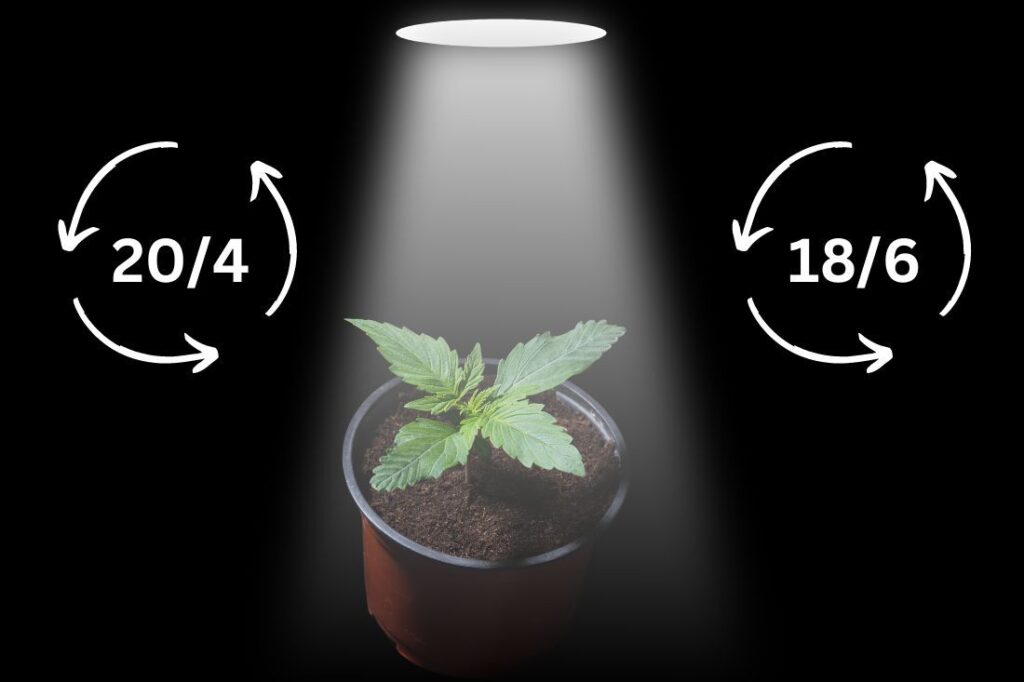
Practical Grower Tips & Environmental Considerations
Monitoring and managing heat and humidity during dark periods
When you introduce darkness into your grow cycle, the room will cool down. This drop in temperature can cause humidity spikes, especially if you’re not running a dehumidifier or fans at night.
To manage this:
- Keep fans running during lights-off
- Use a dehumidifier if RH gets above 60% at night
- Try to maintain a consistent temperature drop of no more than 10°C between day and night
You want the environment to stay stable so your autos don’t stress or stretch.
Selecting light schedules based on strain, grow setup, season
Your light schedule should match your situation.
- Cold seasons or basements: Run 24/0 or 20/4 to keep heat up
- Summer or hot grow rooms: Use 18/6 or 20/4 to give cooling time
- Sativa-leaning autos: Prefer some darkness to avoid stress
- Small tents with high-powered LEDs: 18/6 or 20/4 helps prevent light burn
Every grow space and strain is different—adjust based on how your plants respond.
Pre-harvest darkness: does a long dark period boost resin?
You’ve probably heard of growers leaving their autos in darkness for 24–72 hours before harvest to “boost resin.” I do this myself sometimes, especially with hash strains.
There’s anecdotal evidence that extended darkness before chopping can:
- Encourage resin to thicken as the plant thinks it’s dying
- Improve trichome cloudiness and amber development
- Enhance terpene concentration and aroma
Is it scientifically proven? Not really. But it doesn’t hurt to try—and it just might give your buds that extra sticky punch.
Conclusion
So, do autoflowers really need darkness? Technically, no. But practically, it helps more often than it hurts.
If you’re chasing the biggest, fastest yields in a cool, well-ventilated room, 24/0 can do wonders. But if you’re growing for quality, resin, and flavor—or dealing with heat and humidity—then giving your plants a bit of dark time will likely serve you better.
As someone who’s bred and grown hundreds of autos, my default is 18/6. It’s the schedule that hits the sweet spot between efficiency and flower quality. But you’ve got options—so try different cycles, watch your plants, and see what works best in your grow space.
Autos are flexible, fast, and powerful little machines. Get your light right, and they’ll reward you in a big way.


